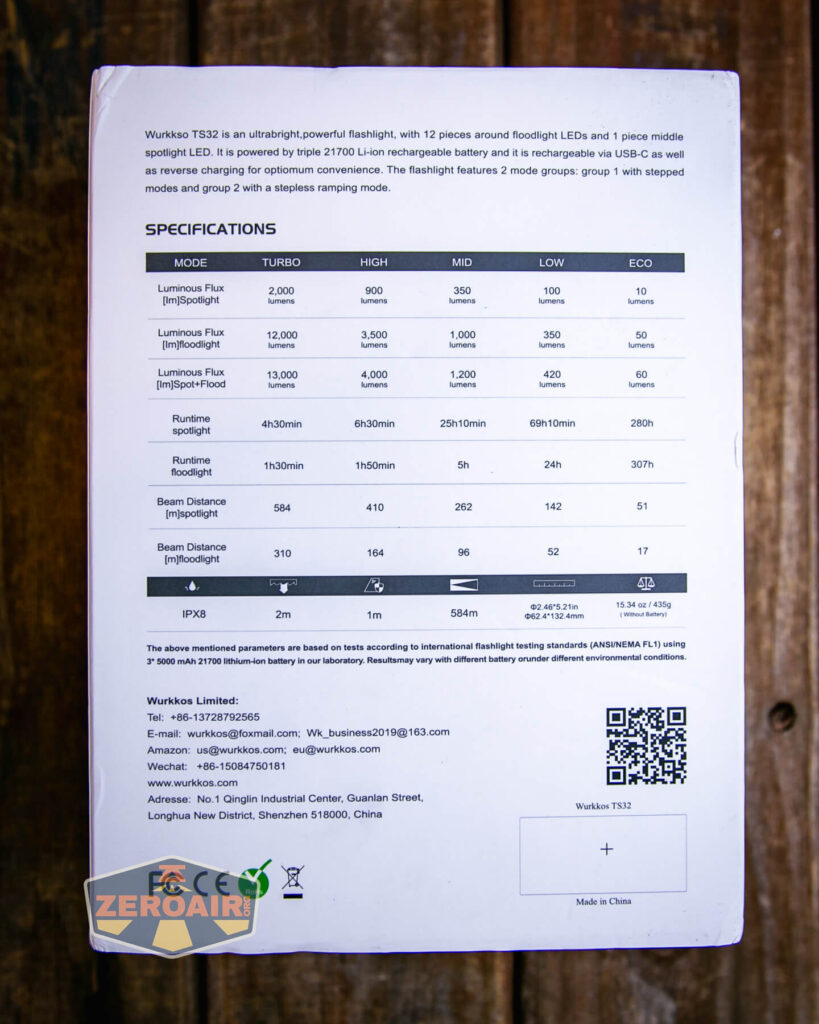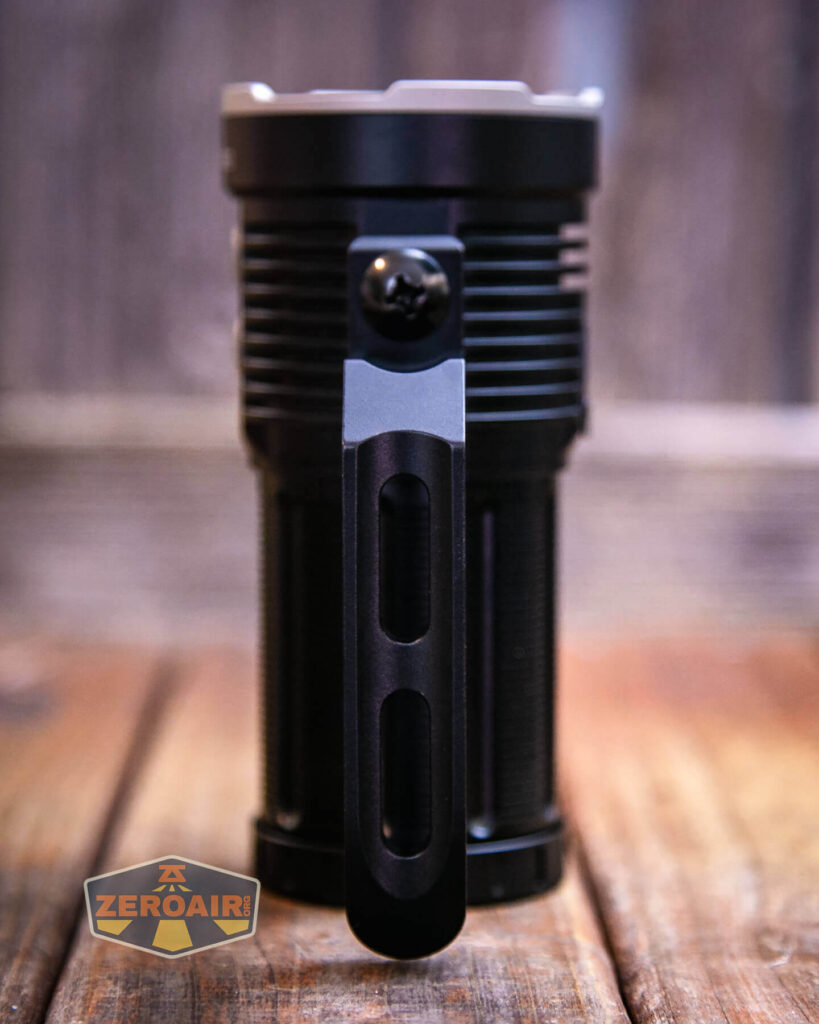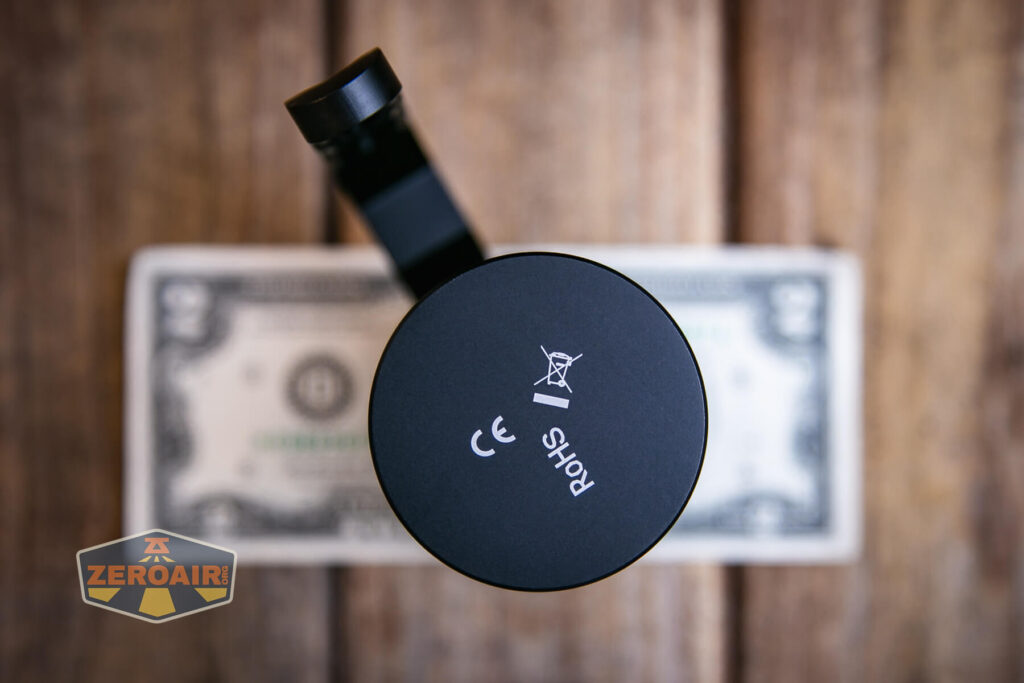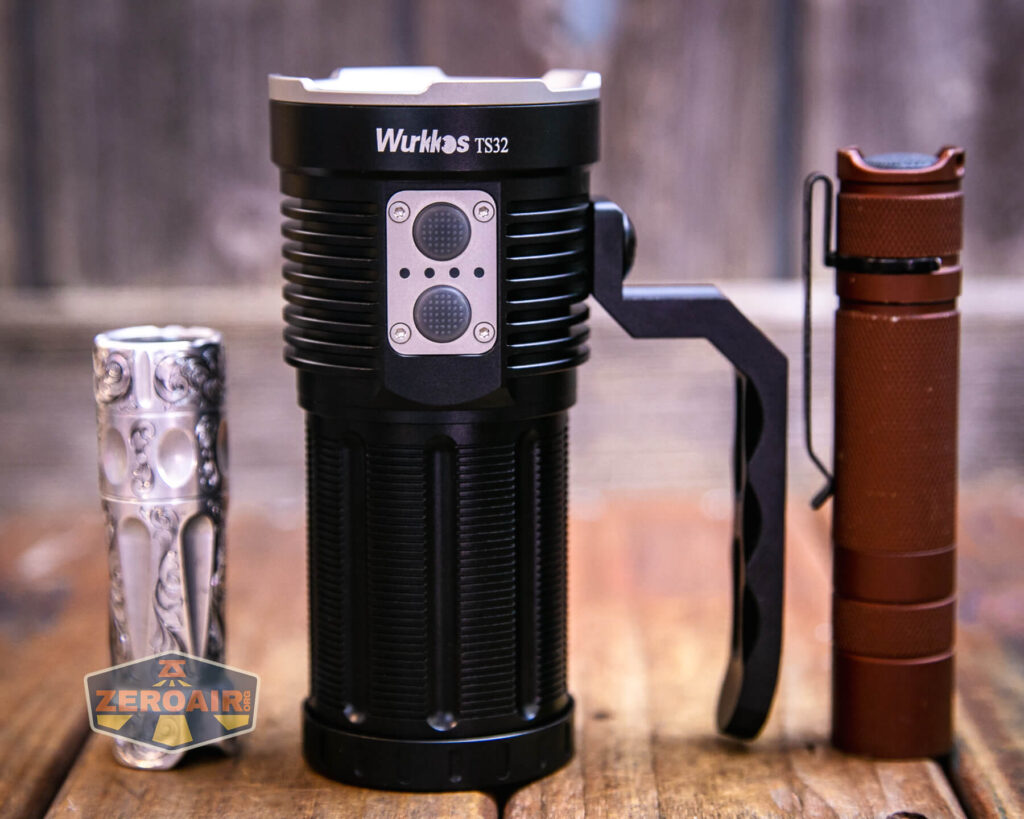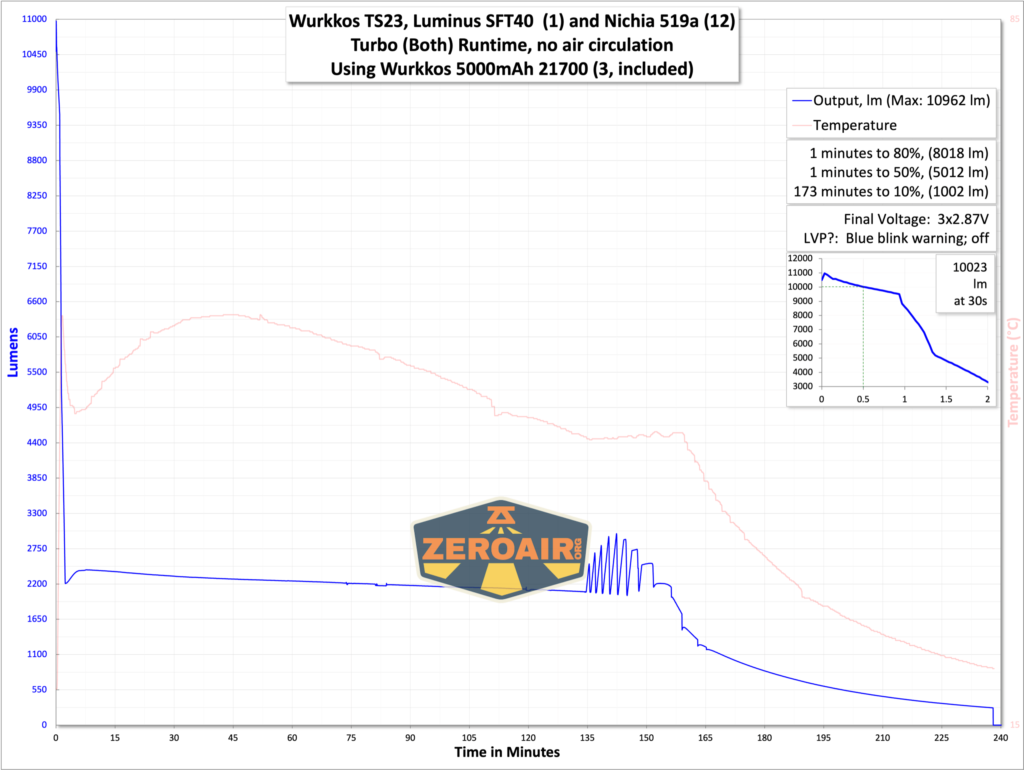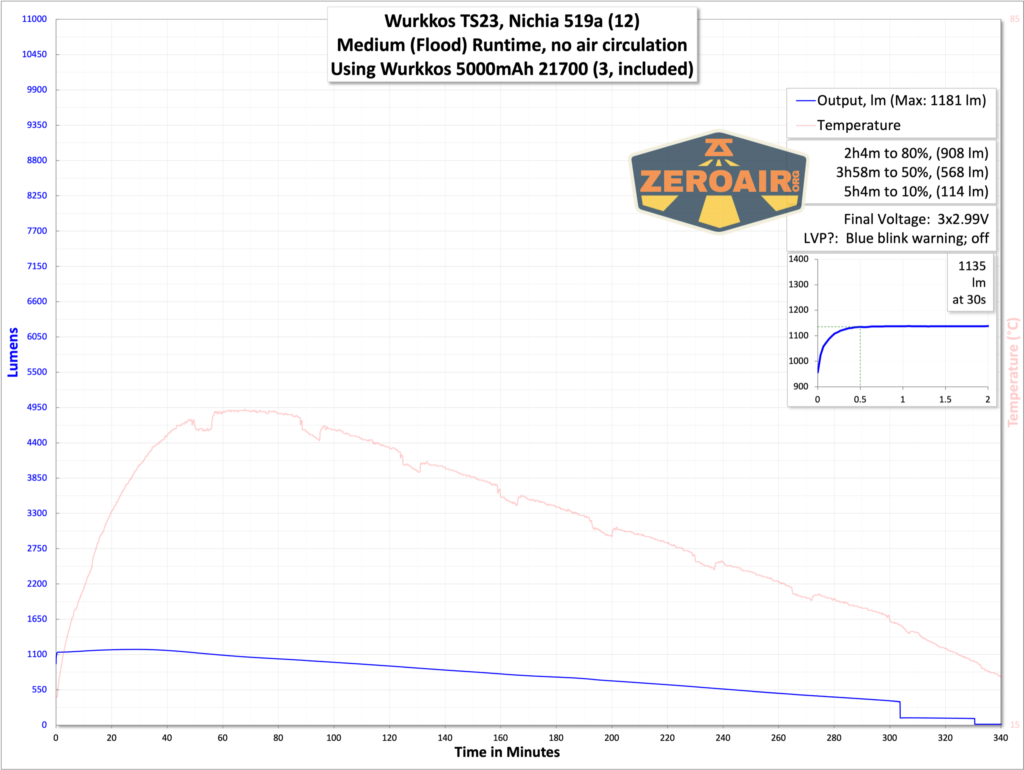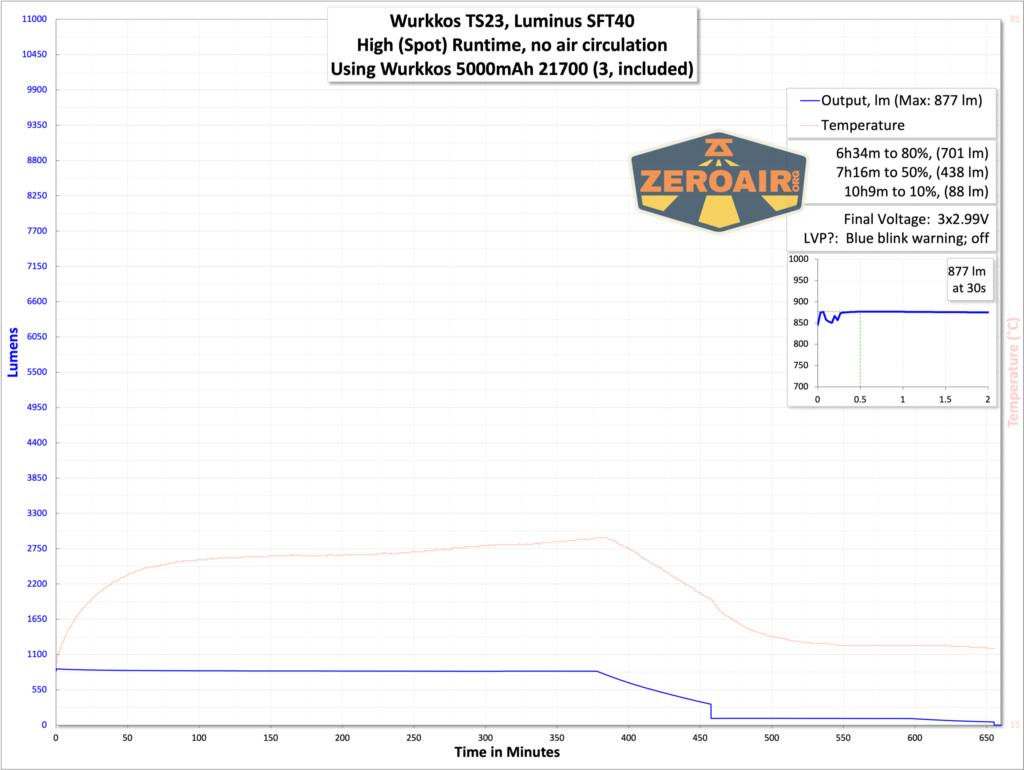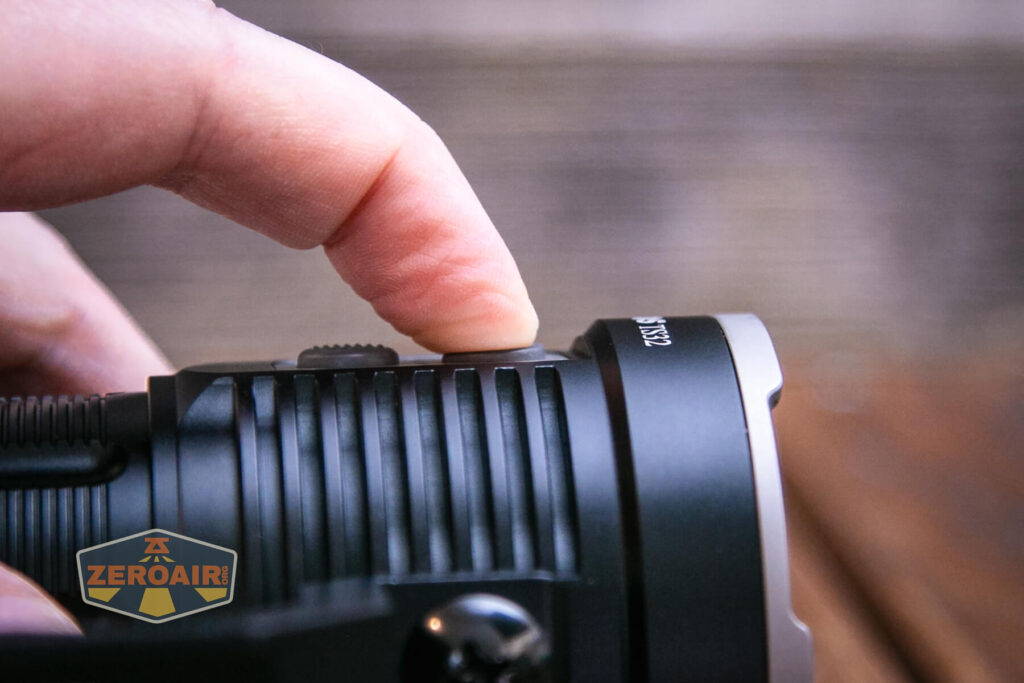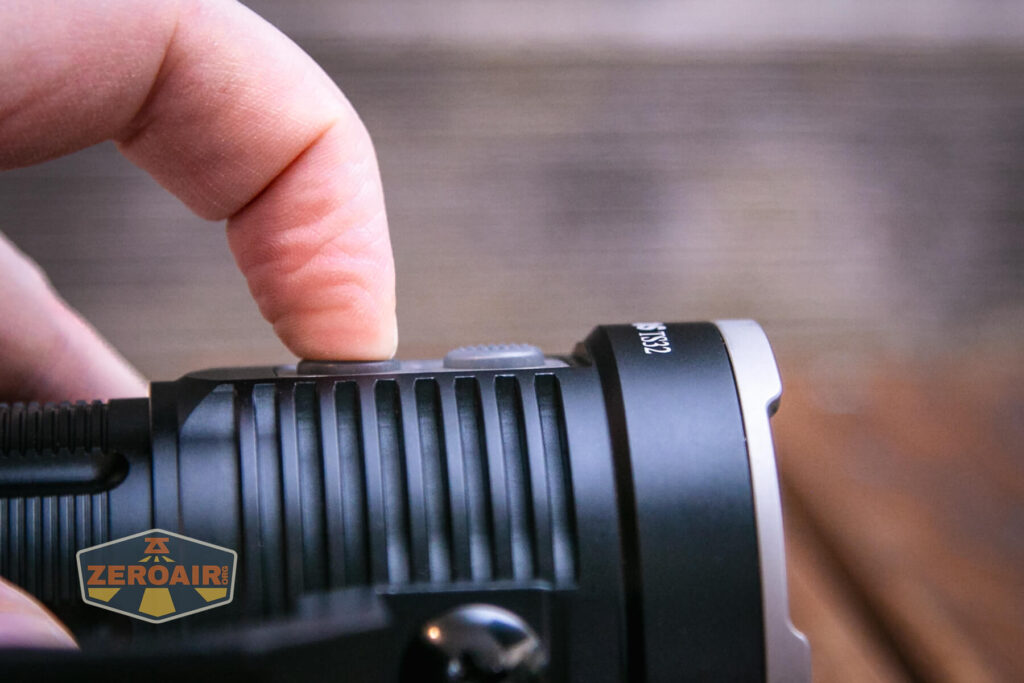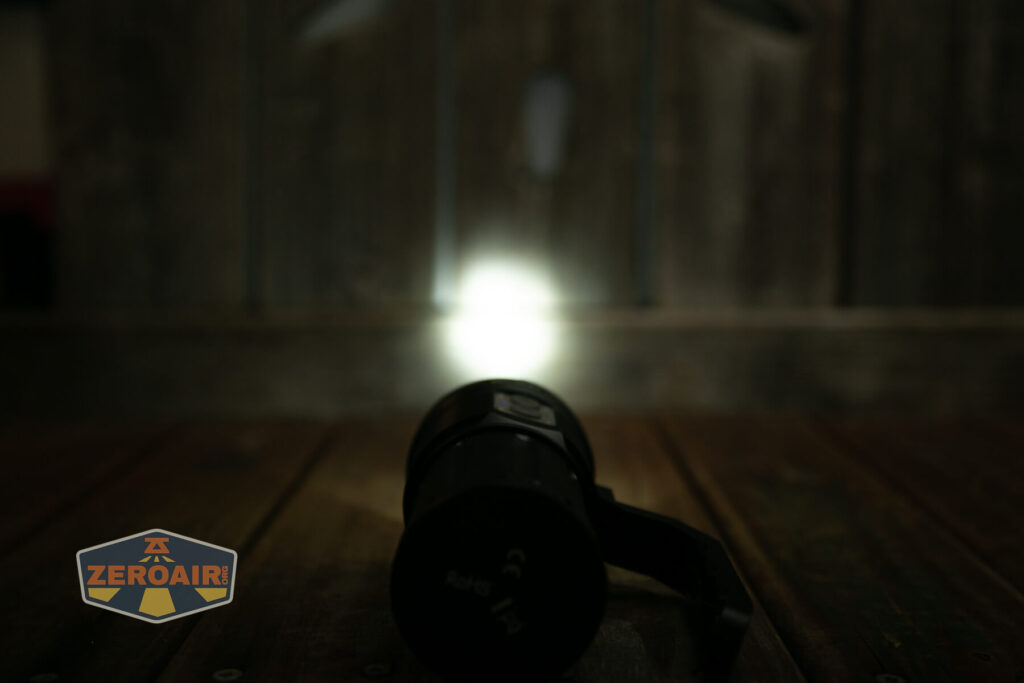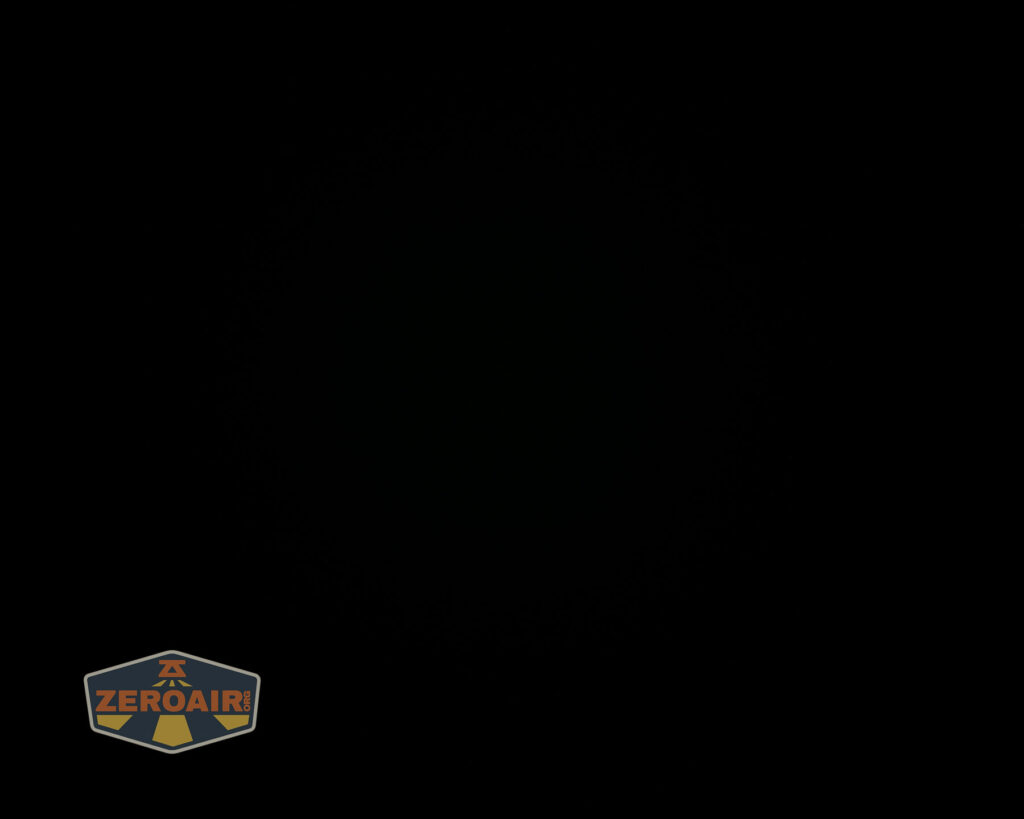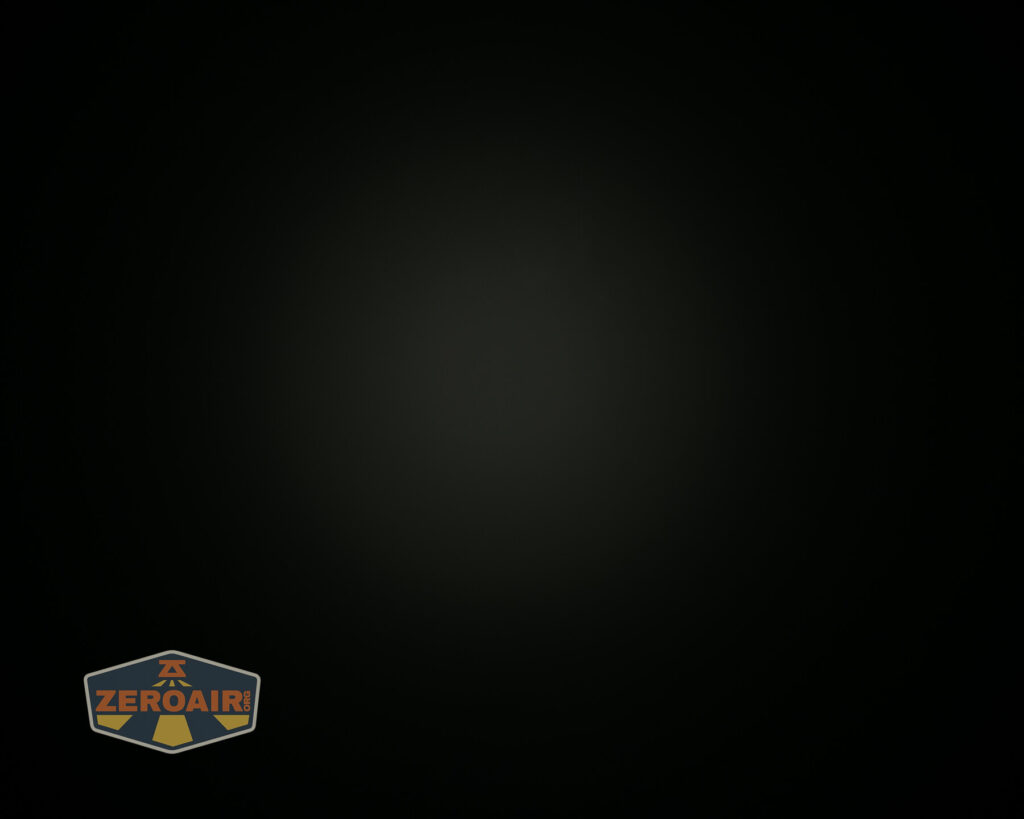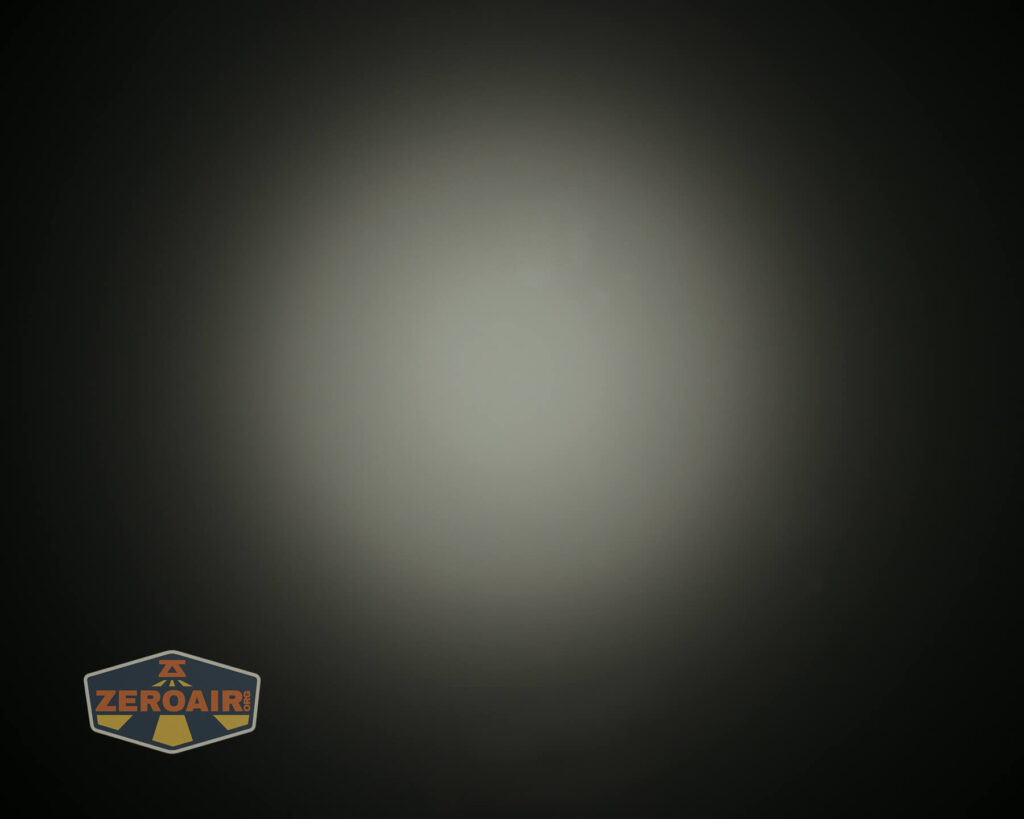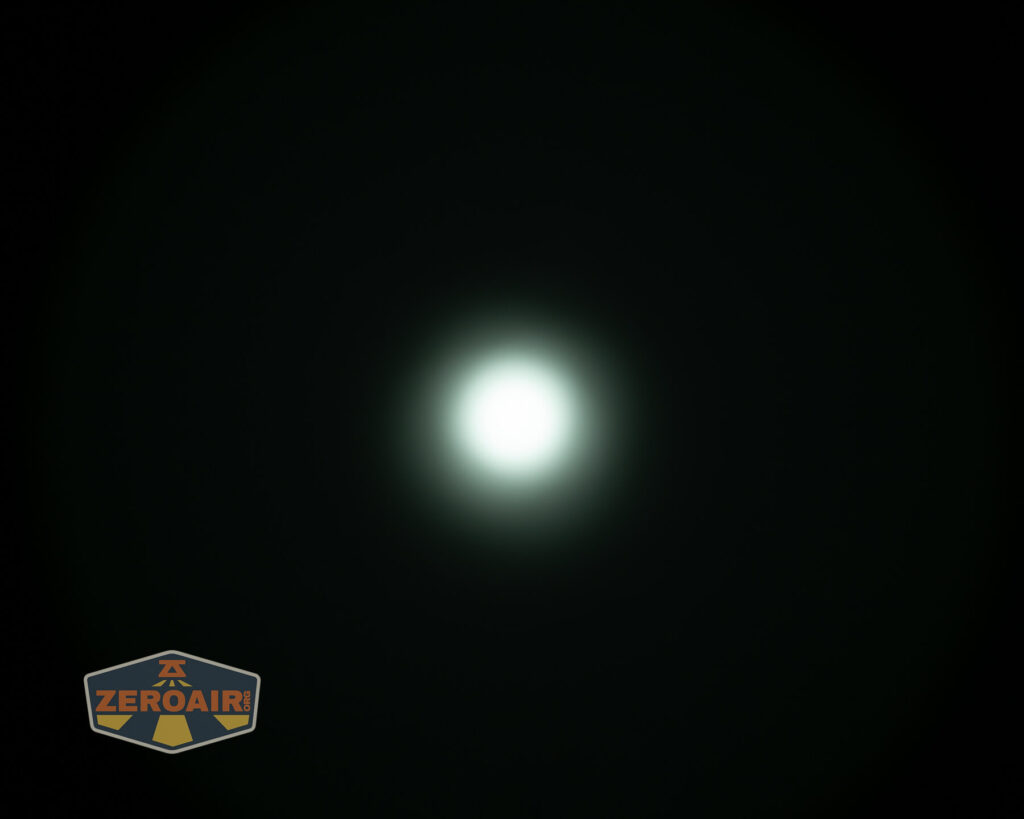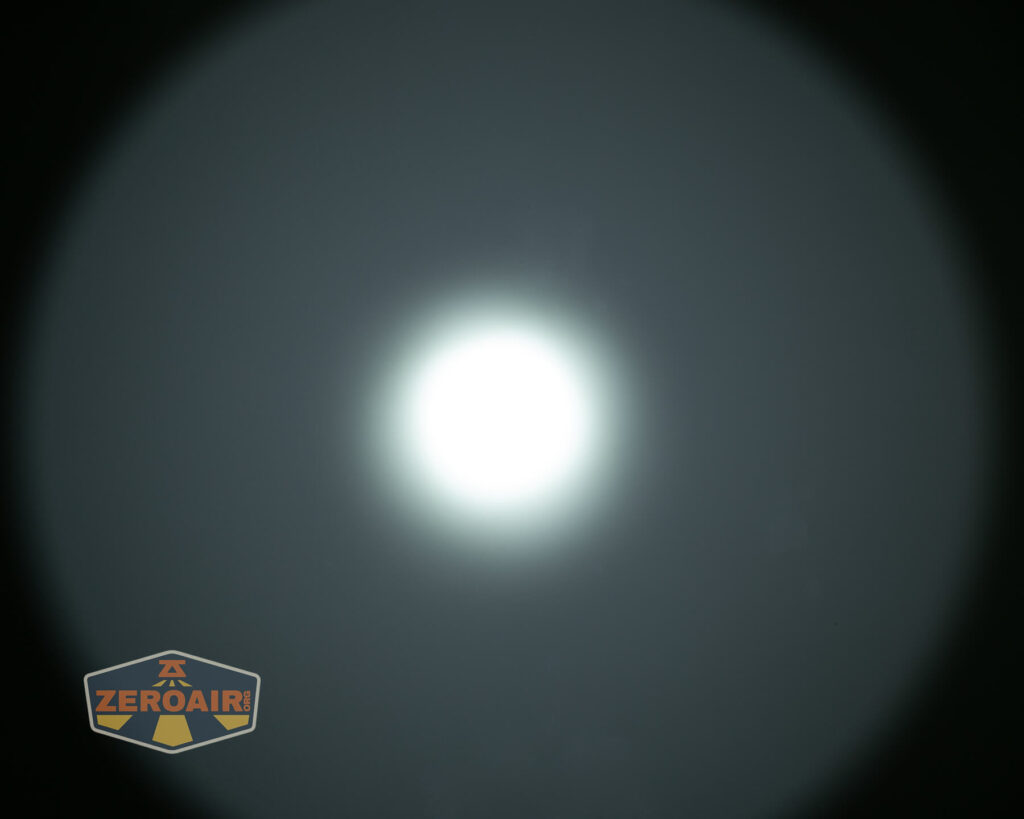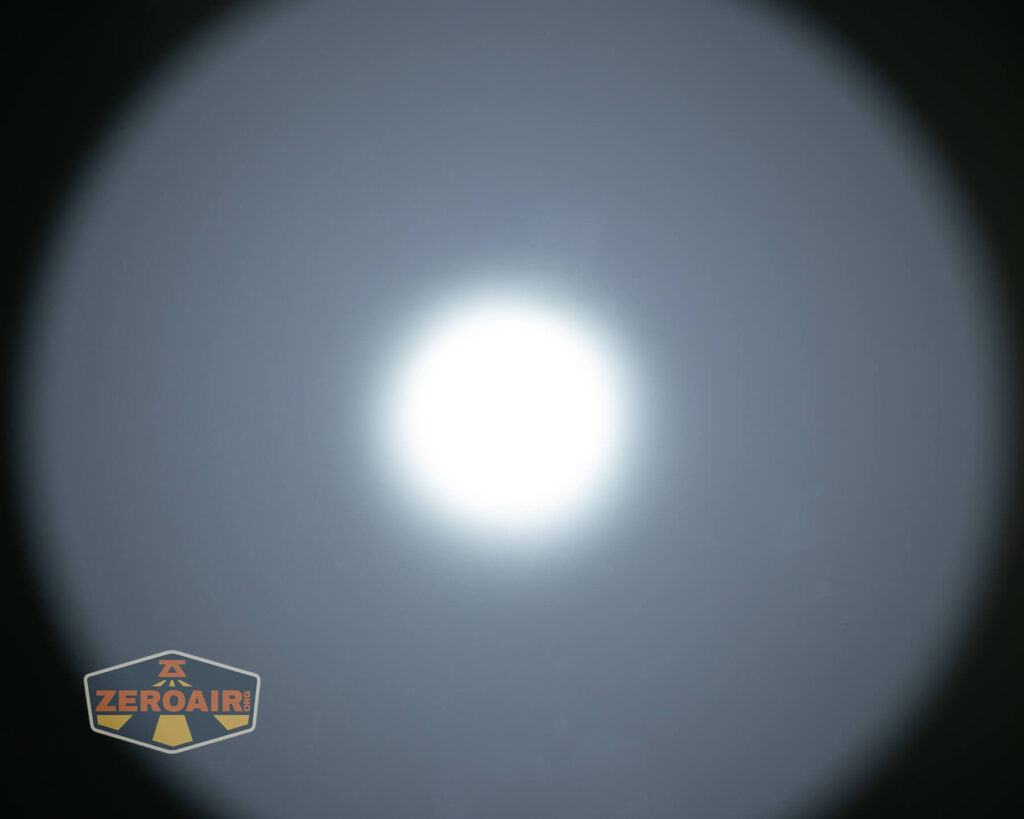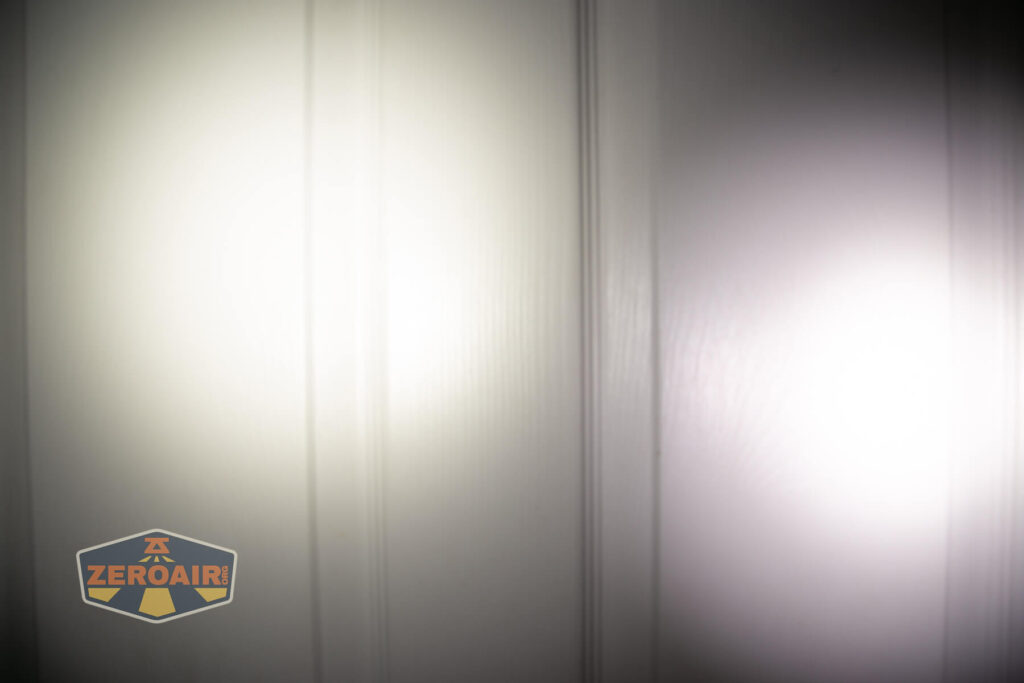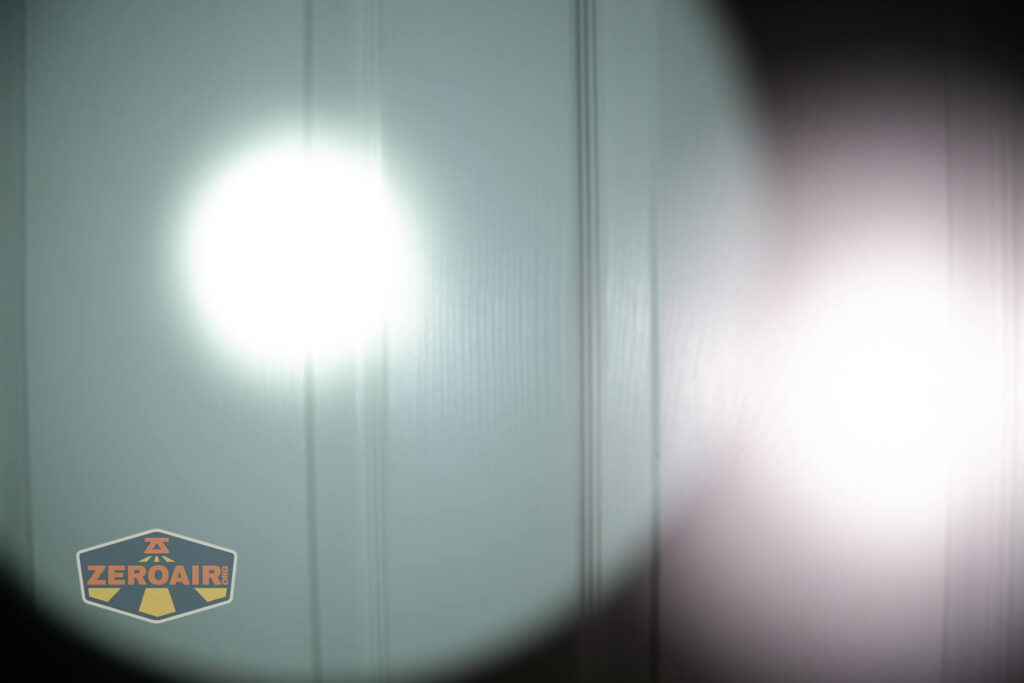Wurkkos TS32 Flashlight Review
The Wurkkos TS32 flashlight is a versatile light offering both a very floody beam (in 5000K and great CRI) and a very throwy beam, too! Read on!
Official Specs and Features
Here’s a link to the Wurkkos TS32 flashlight product page.
Versions
There’s sort of just one version because the previous version had different emitters and has been (or “is being”) replaced by this version. The other version used a Samsung LD351d emitter for flood. As you will see in this post, the current iteration uses Nichia 519a emitters for flood.
Price
The listed price states “20% off” and shows a discounted price of $85.99. I’d expect that’s basically the street price, and around what you should pay. If you include the cells (as you will see in this review), the price goes up to around $102.
Short Review
I have a weird love/hate relationship with lights like these that offer both flood and throw in one package. I hate that I love them so much…. While I almost always love carrying multiple lights, having both needs (that is, “flood” and “throw”) in one light is very useful! As far as this specific light, I can say that it’s also excellent! The two emitter sets can be used separately or together and in just about any combination, which is very useful. Also, the user interface is quite simple. The powerbank feature works quite well, as does the USB-C charging.
Long Review
The Big Table
| Wurkkos TS32 Flashlight | |
|---|---|
| Emitter: | Luminus SFT-40 and Nichia 519a (12, 5000K) (Both) |
| Price in USD at publication time: | $85.99 |
| Cell: | 3×21700 |
| Runtime Graphs | |
| LVP? | Yes |
| Switch Type: | E-Switch |
| Quiescent Current (mA): | ? |
| On-Board Charging? | Yes |
| Charge Port Type: | USB-C |
| Power off Charge Port | “with cells: all modes without cells (or even body): lowest few modes” |
| Claimed Lumens (lm) | 13000 |
| Measured Lumens (at 30s) | 10023 (77.1% of claim)^ |
| Candela per Lumen | 26.9 |
| Claimed Throw (m) | 584 |
| Candela (Calculated) in cd (at 30s) | 2460lux @ 6.024m = 89270cd |
| Throw (Calculated) (m) | 597.6 (102.3% of claim)^ |
| Claimed CCT | – |
| Measured CCT Range (K) | 6400 Kelvin |
| Item provided for review by: | Wurkkos |
| All my Wurkkos reviews! | |
| Wurkkos TS32 Flashlight | |
|---|---|
| Emitter: | Nichia 519a (Flood (12 emitters, 5000K)) |
| Price in USD at publication time: | $85.99 |
| Cell: | 3×21700 |
| Turbo Runtime Graph | High Runtime Graph |
| LVP? | Yes |
| Switch Type: | E-Switch |
| Quiescent Current (mA): | ? |
| On-Board Charging? | Yes |
| Charge Port Type: | USB-C |
| Charge Graph | |
| Power off Charge Port | “with cells: all modes without cells (or even body): lowest few modes” |
| Claimed Lumens (lm) | 12000 |
| Measured Lumens (at 30s) | 9447 (78.7% of claim)^ |
| Candela per Lumen | 3.2 |
| Claimed Throw (m) | 584 |
| Candela (Calculated) in cd (at 30s) | 1148lux @ 6.12m = 42998cd |
| Throw (Calculated) (m) | 414.7 (71% of claim)^ |
| Claimed CCT | 5000 |
| Measured CCT Range (K) | 4800-5200 Kelvin |
| Item provided for review by: | Wurkkos |
| All my Wurkkos reviews! | |
| Wurkkos TS32 | |
|---|---|
| Emitter: | Luminus SFT-40 (Throw) |
| Price in USD at publication time: | $85.99 |
| Cell: | 3×21700 |
| Turbo Runtime Graph | High Runtime Graph |
| LVP? | Yes |
| Switch Type: | E-Switch |
| Quiescent Current (mA): | ? |
| On-Board Charging? | Yes |
| Charge Port Type: | USB-C |
| Charge Graph | |
| Power off Charge Port | “with cells: all modes without cells (or even body): lowest few modes” |
| Claimed Lumens (lm) | 2000 |
| Measured Lumens (at 30s) | 1806 (90.3% of claim)^ |
| Candela per Lumen | 55.2 |
| Claimed Throw (m) | 584 |
| Candela (Calculated) in cd (at 30s) | 2730lux @ 6.111m = 101950cd |
| Throw (Calculated) (m) | 638.6 (109.3% of claim)^ |
| Claimed CCT | – |
| Measured CCT Range (K) | 5900-6900 Kelvin |
| Item provided for review by: | Wurkkos |
| All my Wurkkos reviews! | |
^ Measurement disclaimer: Testing flashlights is my hobby. I use hobbyist-level equipment for testing, including some I made myself. Try not to get buried in the details of manufacturer specifications versus measurements recorded here; A certain amount of difference (say, 10 or 15%) is perfectly reasonable.
What’s Included
- Wurkkos TS32 flashlight
- Wurkkos 5000mAh 21700 (3)
- Handle (attached)
- Charging cable (USB to USB-C)
- Cell adapter (for flat-top cells)
- Spare o-rings (2)
- Manual
Package and Manual
Build Quality and Disassembly
Wurkkos builds nice quality lights at a fairly low cost. This is no exception, and what you get at the purchase price seems to hit pretty hard.
You may know that I love lights with handles – this is a good handle with an “okay” connection. The connection is sort of keyed, and the handle will go to exactly where it should go. Well, more on all this later. Suffice to say that the build quality of the handle is just fine.
There are nice, solid contact points on the head.
Overall, the build quality is great.
Size and Comps
Dimension: 132.4mm (length) x 62.4mm (head diameter)
Weight: 435 ±1 grams (without battery)
If the flashlight will headstand, I’ll show it here (usually the third photo). If the flashlight will tailstand, I’ll also show that (usually in the fourth photo).
Here’s the test light with the venerable Convoy S2+. Mine’s a custom “baked” edition Nichia 219b triple. A very nice 18650 light.
Also above is the light beside my custom-engraved TorchLAB BOSS 35, an 18350 light. I reviewed the aluminum version of that light in both 35 and 70 formats.
Retention and Carry
The only included means for carrying the Wurkkos TS32 flashlight is this handle, which ships attached to the light. Without cells, the TS32 doesn’t rest on the handle (but without cells, why would you even want it to?)
With cells installed, the light will rest on the handle just fine. So you can use the handle as a sort of “standoff” to place the light on a surface horizontally. It’s a good setup.
However, the handle is held in place by just one screw, and it’s a Philips screw. None of that is necessarily bad (though I would rather have two points of attachment, which prevent twisting of the handle). I did find that the screw really has to be cranked down – you might just prefer some threadlock there.
In hand, the handle is great, though you don’t really have any easy switch access.
There’s no pouch or anything else for carrying the Wurkkos TS32 flashlight.
Power and Runtime
Power for the Wurkkos TS32 flashlight is from lithium-ion cells. In this case, that’s three 21700 cells, which can be added on from Wurkkos for around $15. That’s a great price for those three cells, and I fully recommend buying the package.
The cells all fit into the TS32 with the positive end toward the head. This means they’re in a parallel configuration, and a single cell (or two cells) can also run the TS32, though any turbo mode that includes the flood might be a little demanding for just one cell.
Also included is this little cell cover, which is needed for these flat-top cells, but removing it should allow the use of 21700 button tops, too.
Below is a host of runtime graphs. I did see output coming in a bit below the specification, but I’d call it “fairly close enough” to the claim. One thing also noted is that it seems to take just a few seconds (5 to 10) for the output to fully ramp up to maximum. I believe this has something to do with the driver.
I won’t describe every graph. The light does have low voltage protection and seems to protect the cells very well (at around 3V). Also, the cells were always discharged perfectly evenly, which means that contact with the cells and driver is very good.
Four blue LEDs between the switches also give an indication of the battery voltage, as follows.
Four steady: 100% power
Three steady, one blinking: >75% power
Two steady, one blinking: 50-75% power
One steady, one blinking: 25-50% power
One blinking: <25% power
Charging
Built into the Wurkkos TS32 flashlight is USB-C charging. The charge port is across from the switches and has a nice press-in cover.
Wurkkos includes a USB to USB-C cable.
Between the switches is a power indicator. While charging, these blue LEDs blink. When charging is complete, all four are steady blue.
Charging from USB (A) works as does charging from USB-C (ie, “C to C” works).
One of those tests did have all three cells terminating at 4.21V, and while that’s “high,” it’s really not anything to stress over.
Charging the TS32 uses the blue indicating LEDs in the same way that they’re used for runtime indication:
Four steady: 100% power
Three steady, one blinking: >75% power
Two steady, one blinking: 50-75% power
One steady, one blinking: 25-50% power
One blinking: <25% power
Powerbank
One more feature of the Wurkkos TS32 flashlight is that the USB-C port can be used to discharge the cells, too! This is actually great (where by “actually great” I mean “actually useful”) because the high-capacity 21700 cells (5000mAh) (x3) is enough to actually charge something (like your cell phone or whatever.)
And not just that, but the TS32 can output fairly high current (around 3.3A) for quite some time (nearly three hours!!)
Below you can see a bit of a “stress test” on the output. It’s the same test as above, though.
The powerbank shuts off at a similarly safe cell voltage level that it does in runtime tests – around 3V. During powerbank usage, the blue indicating LEDs also indicate power levels, as mentioned above:
Four steady: 100% power
Three steady, one blinking: >75% power
Two steady, one blinking: 50-75% power
One steady, one blinking: 25-50% power
One blinking: <25% power
Modes and Currents
| Mode | Mode Claimed Output (lm) | Claimed Runtime | Measured Lumens | Tailcap Amps |
|---|---|---|---|---|
| Turbo (Both) | 13000 | – | 10023 | >18 |
| Turbo (Flood) | 12000 | 1h20m | 9447 | >18 |
| (Flood) | 3600 | 2h30m | 3124 | 3.84 |
| (Flood) | 1200 | 5h | 1135 | 2.04 |
| (Flood) | 400 | 25h | 254 | 0.73 |
| (Flood) | 50 | 270h | 40 | 0.13 |
| (Flood) | 5 | 1100h | 2.2 | 0.02 |
| (Spot) | 2000 | 4h30m | 1806 | 5.19 |
| (Spot) | 900 | 6h30m | 877 | 1.80 |
| (Spot) | 4000 (typo in manual, certainly means “400”) | 25h10m | 341 | 0.59 |
| (Spot) | 150 | 69h10m | 101 | 0.16 |
| (Spot) | 10 | 387h | 12 | 0.02 |
Pulse Width Modulation
The order below (and in the other sequential photos below, too) is this: top row is 6 modes of flood. The bottom row is 5 modes of flood with the turbo (both) at far right.)
The PWM seen on the top line is fast enough not to be noticeable at all.
Here you can see a “baseline” – a chart with almost no light hitting the sensor. Then there’s the Ultrafire WF-602C flashlight, which has some of the worst PWM I’ve seen. It’s so bad that I used a post about it to explain PWM! Here are multiple timescales (10ms, 5ms, 2ms, 1ms, 0.5ms, 0.2ms) to make comparing this “worst” PWM light to the test light easier. That post also explains why I didn’t test the WF-602C at the usual 50us scale.
User Interface and Operation
Two switches operate the Wurkkos TS32 flashlight. These two control flood (rearmost switch) and spot (frontmost switch), and essentially make those two setups completely separate lights within the TS32.
The switches are exactly the same in size and shape, and clickiness.
Here’s a user interface table! The TS32 offers a stepped output setup (which I prefer) as well as a ramping output.
I won’t write a separate table for each output (flood and spot) because the user interface is the same.
| State | Action | Result |
|---|---|---|
| Off | Click | On (mode memory) |
| Off | Hold | Eco (Spot) or Moonlight (Flood) |
| On (except Turbo) | Click | Off |
| Turbo | Click | Previous output level |
| On | Hold | Advance upward through modes |
| Any | Triple Click | Strobe modes |
| Strobe Modes | Double Click | Strobe advance (Strobe > SOS > Beacon) |
| On | Double Click | Turbo |
| On | Click 4x | Switch between Group 1 (Stepped) and Group 2 (Ramping). 3 flashes indicate group switch. |
LED and Beam
The big change with this version of the TS32 is that the flood emitters are Nichia 519a. There are 12 of those, and a single SFT40 emitter in the center for throw.
These Nichia emitters are just fantastic and the 5000K they output is so very great.
The bezel (which is probably stainless steel) has a bit of shape, and light escapes while the light is face down.
LED Color Report (CRI and CCT)
The mode order here is the same as above. 6 flood modes (low to high) in the top row. Five spot modes (low to high), and then the bottom right-most photo is turbo of both emitters.
CRI and CCT for the flood emitters are great – around the claimed 5000K but also very high CRI. Throw is driven hard and is cooler white with a lower CRI.
Beamshots
These beamshots always have the following settings: f8, ISO100, 0.3s shutter, and manual 5000K exposure. These photos are taken at floor level, and the beam hits the ceiling around 9 feet away.
Tint vs BLF-348 (KillzoneFlashlights.com 219b version) (affiliate link)
I keep the test flashlight on the left and the BLF-348 reference flashlight on the right.
I compare everything to the KillzoneFlashlights.com 219b BLF-348 because it’s inexpensive and has the best tint!
Conclusion
What I like
- Good price for what you get
- Including cells with the package only adds around $15
- Good (and fairly simple) user interface
- High CRI flood
- Flood output can be very bright!
- Handle!
- USB-C charging
- Powerbank is very capable
- Offers ramping
What I don’t like
- Handle needs either 2 screws or a drop of threadlock
- Doesn’t seem to hit output specifications (more so on the flood output)
Notes
- This content originally appeared at zeroair.org. Please visit there for the best experience!
- Please use my Amazon.com referral link to help support zeroair.org!
- Please support me on Patreon! I deeply appreciate your support!





